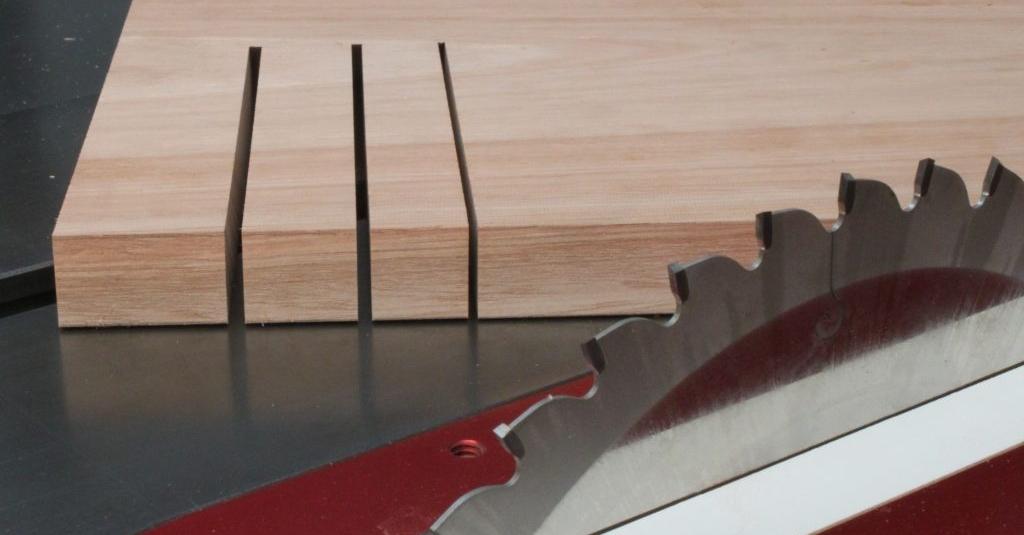Are you curious to know what is a kerf? You have come to the right place as I am going to tell you everything about a kerf in a very simple explanation. Without further discussion let’s begin to know what is a kerf?
In the world of woodworking and construction, the term “kerf” is an important yet often overlooked concept. Kerf plays a crucial role in various aspects of these industries, affecting everything from precision cutting to the overall performance of tools and machinery. In this blog, we will explore what a kerf is, its significance, and its impact on woodworking and construction.
What Is A Kerf?
Kerf is a term used to describe the width of the cut or groove made by a saw, blade, or cutting tool in a material, typically wood, metal, or plastic. It represents the amount of material that is removed during a cutting or machining process. The width of the kerf is determined by the thickness and shape of the cutting tool, the type of material being cut, and the cutting process itself.
Key Factors that Influence Kerf Width
- Blade Thickness: The thickness of the cutting tool, such as a saw blade or router bit, is a significant factor in determining the width of the kerf. Thicker blades create wider kerfs, while thinner blades result in narrower kerfs.
- Tooth Configuration: The shape and arrangement of teeth on the cutting tool impact kerf width. Tools with closely spaced teeth tend to create narrower kerfs, while those with widely spaced teeth produce wider kerfs.
- Material Type: Different materials, such as wood, metal, and plastic, have varying densities and properties. Consequently, the type of material being cut can affect the width of the kerf.
- Cutting Speed and Feed Rate: The speed at which the cutting tool moves through the material (cutting speed) and the rate at which material is fed into the tool (feed rate) influence the width of the kerf. Higher speeds and faster feed rates generally result in wider kerfs.
Significance of Kerf
Kerf width is a critical consideration in woodworking and construction for several reasons:
- Accuracy: Understanding and controlling kerf width is essential for achieving precise and accurate cuts. Woodworkers and builders must account for the kerf when making measurements and joinery, ensuring that the final pieces fit together correctly.
- Material Efficiency: Wider kerfs result in more material waste, which can be a concern in projects where minimizing waste is important. Optimizing kerf width can help conserve resources.
- Tool Selection: The choice of cutting tool, such as a saw blade or router bit, should take into account the desired kerf width. Different tools are designed for specific kerf sizes and cutting tasks.
- Performance: Kerf width can impact the performance of tools and machinery. A poorly adjusted kerf can lead to overheating, excessive wear and tear on blades, and reduced cutting efficiency.
- Safety: A correct understanding of kerf width is crucial for safety. It helps prevent accidents and ensures that pieces of material do not get jammed or become difficult to handle during the cutting process.
Find out more knowledgable facts by visiting Whatismeaningof.
Conclusion
Kerf may be a seemingly small and technical aspect of woodworking and construction, but it plays a significant role in ensuring the accuracy, efficiency, and safety of various projects. Woodworkers and builders must carefully consider kerf width when selecting cutting tools, making measurements, and planning their work. By doing so, they can achieve the desired results with precision and efficiency, making kerf an essential concept in these industries.
FAQ
What Is The Purpose Of A Kerf?
Kerf is defined as the width of material that is removed by the cutting/sawing process. A thick or full kerf circular saw blade will create a wider slot in the wood you are sawing, therefore, removing more material and creating more dust.
What Is A Kerf Cut?
Kerf is defined as the width of a cut or width of a material that is removed by a cutting process.
What Is Kerf In Cnc?
Kerf is the width of material that is removed by a cutting process, such as CNC milling or hand-cutting with a saw. The term was originally used to describe how much wood was removed by a saw. A saw’s teeth are bent to the side so that they remove more material than the width of the saw blade itself.
What Is A Kerf In Machining?
What is Kerf? “Kerf” is a machining term which refers to the amount of material removed during cutting. For example, if you cut a metal plate with a saw, some material (which will turn to ‘sawdust’) will be removed as the saw cuts through the plate.
I Have Covered All The Following Queries And Topics In The Above Article
What Is A Kerf Cut
What Is Kerf On A Saw Blade
What Is The Kerf Of A Saw Blade
What Is A Saw Kerf
What Is A Kerf Saw Blade
What Is A Kerf Knife
What Is A Kerf Cut
What Is A Kerf Cut Firefighting
What Is A Kerf On A Door
Kerf Meaning In Construction
What Is Kerf Width
What Is Kerf In Laser Cutting
What Is A Kerf
What is the KERF of a cut






